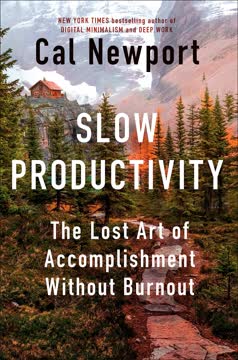つの重要なポイント
1. 適応型リーダーシップ: 困難な課題に取り組むための人々の動員
適応型リーダーシップは、繁栄する能力を可能にする変化に関するものである。
変化の中で繁栄する。 適応型リーダーシップは、簡単な解決策がない複雑な課題をナビゲートするための実践的なフレームワークである。これは、困難な問題に取り組み、変化する環境で繁栄するために人々を動員することに関するものである。既存の知識で解決できる技術的な問題とは異なり、適応型の課題は新しい学習、イノベーション、価値観や行動の変化を必要とする。
主要な原則:
- 技術的な課題と適応型の課題を区別する
- 利害関係者を問題解決プロセスに巻き込む
- 学習と実験に焦点を当てる
- 成長の一部として不快感と不確実性を受け入れる
適応型リーダーシップはすべての答えを持つことではなく、人々が集団で解決策を発見し実行するための条件を作り出すことである。リーダーは一歩引いて、パターンを観察し、組織が適応し繁栄するのを助けるために戦略的に介入する必要がある。
2. システムを診断する: 組織のダイナミクスを理解する
すべての組織は一つの全体的なシステムであるだけでなく、一連のサブシステムでもある。
システム的視点。 適応型の変化を効果的にリードするためには、リーダーは組織の構造、文化、デフォルトの行動を深く理解する必要がある。これは、「バルコニー」に上がって、地上レベルからは見えないパターンやダイナミクスを観察することを含む。
診断すべき主要な領域:
- 公式および非公式の権力構造
- 文化的規範と価値観
- コミュニケーションパターン
- 意思決定プロセス
- 変化への抵抗
システムをマッピングすることで、リーダーは介入のためのレバレッジポイントを特定し、潜在的な障害を予測することができる。この診断アプローチは、人々とリソースを適応型の作業に動員するためのより効果的な戦略を設計するのに役立つ。
3. 不均衡を管理する: ストレスと変化のバランスを取る
チームが診断や行動において適応型の課題に焦点を当てることを避ける方法を見つけることを期待する。
生産的な不均衡のゾーン。 適応型の変化は、人々が変化する動機を持つために十分な不均衡を作り出すことを必要とするが、圧倒されたり麻痺したりしないようにする必要がある。リーダーは温度を調整する方法を学び、人々が快適すぎるときに熱を上げ、ストレスが逆効果になるときに下げる必要がある。
不均衡を管理するための戦略:
- 作業のペースを調整する
- ホールディング環境を作る
- 介入の順序とタイミングを調整する
- 異議を唱える声を保護する
- 作業を人々に戻す
目標は、人々が学び適応する能力を超えない範囲で、適応型の作業に従事し続けるための生産的なストレスレベルを維持することである。
4. 対立を調整する: 進展のための緊張を活用する
対立は、表面的な調和ではなく、実際の調和に到達するための重要なリソースである。
建設的な緊張。 適応型の課題はしばしば競合する価値観や視点を伴う。対立を避けたり抑えたりするのではなく、効果的なリーダーはそれを生産的に調整する方法を学ぶ。これは、異なる視点が聞かれるためのスペースを作り、新しい洞察と解決策に導く困難な会話を促進することを意味する。
対立を調整するためのステップ:
- 競合する視点を表面化させる
- 困難な会話のためのホールディング環境を作る
- 対話と深い傾聴を促進する
- 違いの中で共有の目的を特定するのを助ける
- 創造的な問題解決に向けてグループを導く
対立を巧みに管理することで、リーダーは組織が多様なアイデアを活用し、より強く適応力のあるものに成長するのを助けることができる。
5. 作業を戻す: 他者に問題解決を委ねる
適応型リーダーシップを実践するためには、人々が適応型の課題に対処するために必要な期間をナビゲートするのを助ける必要がある。
分散された責任。 適応型リーダーシップの重要な原則は、他者のために問題を解決する誘惑に抵抗することである。代わりに、リーダーは個人やグループが適応型の課題に取り組む能力を育成する必要がある。これは、学習、実験、集団的な問題解決の機会を作り出すことを含む。
作業を戻すための技術:
- 答えを提供するのではなく質問をする
- グループの問題解決のためのフォーラムを作る
- 実験と失敗からの学習を奨励する
- 組織全体でリーダーシップ能力を育成する
- 迅速な解決策を提供する圧力に抵抗する
他者に適応型の作業を委ねることで、リーダーは継続的な課題に直面しても繁栄できる、より回復力のある有能な組織を構築する。
6. 異議を唱える声を保護する: 多様な視点を受け入れる
異議を唱える声は、今日の議題に対してだけでなく、このイニシアチブに対しても疑問を投げかける否定的な意見を持つ人々である。しかし、適応型の変化を実施するためには、彼らは重要なリソースである。
反対意見を受け入れる。 異議を唱える声はしばしば潜在的な問題について貴重な洞察と早期警告を提供する。これらの視点を疎外したり黙らせたりするのではなく、適応型リーダーはそれらが聞かれ考慮されるためのスペースを作る。
異議を唱える声を保護する方法:
- 多様な視点を積極的に求める
- 不人気なアイデアを表現するための心理的安全性を作る
- 意思決定において悪魔の代弁者の技術を使用する
- 建設的な批判と仮定の疑問視を奨励する
- フィードバックと代替視点に対するオープンさをモデル化する
異議を重視することで、組織は集団思考を避け、盲点を特定し、適応型の課題に対するより堅牢な解決策を開発することができる。
7. 目的を持ってリードする: 行動を価値観に結びつける
問題の一部である自分の役割を特定することには、二つの重要な利点がある。第一に、それを行うことで、少なくとも自分のコントロール下にある問題の一要素を修正する機会が生まれる。第二に、適応型の課題に取り組む際に他者に求める責任をモデル化することができる。
目的駆動のリーダーシップ。 適応型リーダーシップは、自分の価値観と目的に深く結びつくことを必要とする。リーダーは、適応型の作業がなぜ重要であり、それが組織の核心的な使命とどのように一致するかを明確に説明できなければならない。これは、自分自身の目的を明確にするだけでなく、他者が自分の仕事をより大きな意味に結びつけるのを助けることを含む。
目的を持ってリードするためのステップ:
- 個人および組織の価値観を明確にする
- 変化のための説得力のあるビジョンを明確にする
- 他者が大きな目的の中で自分の役割を見つけるのを助ける
- 責任と個人的なコミットメントをモデル化する
- 共有の目的を定期的に再確認し強化する
適応型の作業を共有の目的と価値観に基づかせることで、リーダーは挑戦に直面してもより大きなコミットメントと回復力を引き出すことができる。
8. 勇気を持って関与する: 快適ゾーンを超える
適応型リーダーシップは、日常のルーチンから未知の領域に踏み出し、保証のない行動を要求する。
不快感を受け入れる。 適応型の変化をリードすることは、しばしばリーダーが快適ゾーンを超えて個人的なリスクを取ることを要求する。これは、困難な会話をする、不人気な決定を下す、または長年の仮定に挑戦することを含むかもしれない。勇気を持って関与することは、成長と進歩のために無能さと脆弱性を経験する意欲を意味する。
勇気を持って関与するための戦略:
- 自分自身の適応型の課題を特定し対処する
- 低リスクの設定で困難な会話とスキルを練習する
- 個人的な回復力のためのサポートネットワークを構築する
- 失敗や挫折から学び反省する
- 挑戦を受け入れる成長マインドセットを育む
勇気と脆弱性をモデル化することで、リーダーは他者が適応型の作業により完全に関与するように促すことができる。
9. 他者を鼓舞する: 心からのコミュニケーション
インスピレーションは、稀で才能のあるカリスマ的な個人にのみ備わっている生来の能力ではない。誰もがこの能力を持っていることを確認するために、病院の小児科を歩いてみると、日常的に人々がインスピレーションを与える能力が周囲に広がっていることがわかる。
本物のコミュニケーション。 適応型の作業に他者を従事させるためには、論理的な議論や技術的な専門知識以上のものが必要である。これは、人々の感情、価値観、願望に結びつくことを含む。リーダーは、本当に重要なことについて心から話す方法を学ぶ必要がある。
インスピレーションを与えるコミュニケーションの要素:
- 個人的なストーリーと脆弱性を共有する
- 作業を共有の価値観と目的に結びつける
- メタファーや生き生きとした言葉を使って説得力のあるビジョンを描く
- 深く共感的に傾聴する
- 困難を認めつつ希望を持ち続ける
本物の情熱を持ってコミュニケーションすることで、リーダーは適応型の課題に取り組むための人々のエネルギーとコミットメントを動員することができる。
10. 実験を行う: 反復的なアプローチを受け入れる
適応型の変化をリードするすべての行動は実験である。
反復的な学習。 適応型の課題には、最初から明確な解決策がないことが多い。リーダーは、実験的なマインドセットを持ち、新しいアプローチを試み、失敗から学び、フィードバックに基づいてコースを調整する意欲を持つ必要がある。この反復的なプロセスは、より迅速な学習と適応を可能にする。
実験的なリーダーシップの原則:
- 介入をテストすべき仮説としてフレーム化する
- 小規模で低リスクの実験から始める
- データとフィードバックを体系的に収集する
- 成功と失敗の両方から学び反省する
- 成功したアプローチを段階的に拡大する
実験的なアプローチを受け入れることで、リーダーは適応型の課題の不確実性をより効果的にナビゲートし、組織の継続的な学習と適応の能力を構築することができる。
最終更新日:
FAQ
What's The Practice of Adaptive Leadership about?
- Leadership Challenges: The book focuses on how to mobilize people to tackle tough challenges and thrive in a changing world, emphasizing adaptive leadership.
- Adaptive vs. Technical Problems: It distinguishes between adaptive challenges, which require changes in people's priorities and beliefs, and technical problems, which can be solved with existing knowledge.
- Practical Tools: Provides practical tools and tactics for leaders to diagnose organizational systems, mobilize teams, and implement effective interventions.
Why should I read The Practice of Adaptive Leadership?
- Enhance Leadership Skills: Offers insights and frameworks to significantly enhance leadership capabilities, especially in navigating complex challenges.
- Real-World Applications: Includes real-world examples and case studies from various sectors, making the content relatable and applicable.
- Focus on Change Management: Equips readers with skills to foster resilience and adaptability in fast-paced environments.
What are the key takeaways of The Practice of Adaptive Leadership?
- Adaptive Leadership Framework: Introduces a framework for diagnosing systems, mobilizing teams, and deploying oneself effectively.
- Importance of Diagnosis: Emphasizes understanding the organizational context and challenges before jumping to solutions.
- Engagement and Collaboration: Stresses the importance of engaging diverse stakeholders and fostering collaboration to address complex challenges.
What are the best quotes from The Practice of Adaptive Leadership and what do they mean?
- “People resist change.”: Highlights that people resist the losses associated with change, not change itself, aiding leaders in navigating resistance.
- “Adaptive leadership is the practice of mobilizing people to tackle tough challenges and thrive.”: Emphasizes leadership as guiding teams through complex challenges.
- “The single most important skill and most undervalued capacity for exercising adaptive leadership is diagnosis.”: Underscores the critical role of diagnosis in leadership.
How does The Practice of Adaptive Leadership define adaptive challenges?
- Adaptive vs. Technical: Adaptive challenges require changes in values, beliefs, and behaviors, unlike technical problems solvable with existing knowledge.
- Complexity and Emotion: Involve complex human dynamics and emotions, making them difficult to address.
- Collective Engagement: Necessitate collaboration and engagement from various stakeholders for solutions to emerge collectively.
What is the concept of a "holding environment" in The Practice of Adaptive Leadership?
- Definition: A supportive space allowing individuals to engage in adaptive work without fear of judgment.
- Importance: Essential for surfacing difficult issues and facilitating productive conflict.
- Elements: Includes shared language, collaboration history, and norms encouraging open dialogue.
How can I diagnose the system in my organization according to The Practice of Adaptive Leadership?
- Get on the Balcony: Step back to gain perspective on organizational dynamics and observe patterns.
- Identify Structures and Culture: Analyze formal structures, cultural norms, and default behaviors.
- Engage Stakeholders: Involve various stakeholders to gather diverse perspectives and enrich understanding.
How can I mobilize my team to tackle adaptive challenges in The Practice of Adaptive Leadership?
- Effective Interventions: Design thoughtful, contextually relevant interventions that engage team members.
- Encourage Open Dialogue: Foster an environment where team members feel safe to express thoughts and concerns.
- Leverage Diverse Perspectives: Engage a variety of stakeholders to bring different viewpoints into the conversation.
What strategies can I use to act politically in my organization as suggested in The Practice of Adaptive Leadership?
- Expand Informal Authority: Build relationships with key stakeholders to enhance informal authority.
- Identify Allies and Opponents: Map out stakeholders, identifying potential allies and opponents.
- Engage Dissenters: Protect and engage voices of dissent to surface important issues.
How does The Practice of Adaptive Leadership suggest leaders deal with resistance to change?
- Acknowledge Losses: Recognize and address the losses individuals may experience during change.
- Engage in Dialogue: Open conversations about resistance to uncover underlying concerns.
- Build a Coalition: Work to build coalitions of support among stakeholders for a shared vision.
What role does emotional intelligence play in The Practice of Adaptive Leadership?
- Understanding Emotions: Crucial for recognizing and understanding emotions to navigate social dynamics.
- Building Connections: Helps leaders connect with teams, fostering trust and collaboration.
- Managing Stress and Conflict: Aids in managing stress and conflict, allowing leaders to remain calm.
What are the seven steps to orchestrating conflict as outlined in The Practice of Adaptive Leadership?
- Prepare: Understand perspectives and concerns of different factions to build trust.
- Establish Ground Rules: Set rules for discussions to ensure a safe environment.
- Get Each View on the Table: Encourage articulation of values and concerns for understanding.
- Orchestrate the Conflict: Articulate competing claims and maintain focus on the challenge.
- Encourage Accepting and Managing Losses: Allow reflection on necessary losses for acceptance.
レビュー
『適応型リーダーシップの実践』は、組織の変革や複雑な課題に対処するための実践的な洞察が高く評価されている。読者はこの本の適応型リーダーシップの枠組みを価値あるものと見なし、システムの診断、技術的問題と適応的問題の区別、ステークホルダーの関与に重点を置いている点を強調している。職場以外でも応用可能であることを評価する読者も多い。一方で、批評家は繰り返しが多いことや、特定の分野での深みの欠如を指摘している。総じて、変革的な課題に直面するリーダーにとって有用なリソースと見なされているが、他のリーダーシップ書籍と比べて魅力に欠けると感じる人もいる。
Similar Books












